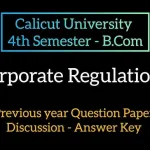The 9th class final exam of 2019 covered various subjects like English, Mathematics, Science, and Social Studies. This guide provides a detailed set of questions and answers from each subject to help students prepare.
Top 9th Class Final Exam Paper 2019 Questions and Answers Subjectwise
English Questions
Question: What is the theme of the poem “The Road Not Taken”?
Answer: The theme is about choices in life and the consequences of those choices.
Question: Define the term “metaphor.”
Answer: A metaphor is a figure of speech that compares two unlike things without using “like” or “as.”
Question: What is the main character’s name in the story “The Necklace”?
Answer: The main character’s name is Mathilde Loisel.
Question: How is the passive voice formed in English?
Answer: The passive voice is formed by using the verb “to be” followed by the past participle of the main verb.
Question: Explain the difference between a simile and a metaphor.
Answer: A simile uses “like” or “as” to compare two things, while a metaphor directly compares them without using “like” or “as.”
Question: What is a noun clause?
Answer: A noun clause is a dependent clause that functions as a noun in a sentence.
Question: Write an example of a compound sentence.
Answer: She finished her homework, and then she went to play.
Question: What is the significance of the title “A Tale of Two Cities”?
Answer: The title refers to the cities of London and Paris during the French Revolution.
Question: What is personification?
Answer: Personification is giving human qualities to non-human things or abstract ideas.
Question: Define “irony” in literature.
Answer: Irony is when there is a contrast between expectation and reality.
Question: Explain what is meant by “first-person narrative.”
Answer: First-person narrative is a story told from the perspective of the narrator, using “I” or “we.”
Question: What are the characteristics of a sonnet?
Answer: A sonnet is a 14-line poem with a specific rhyme scheme and meter.
Question: What is the purpose of a thesis statement in an essay?
Answer: A thesis statement expresses the main idea or argument of the essay.
Question: What is the climax of a story?
Answer: The climax is the point of highest tension or conflict in a story.
Question: How do you identify a theme in a literary text?
Answer: A theme is identified by looking at the central ideas or messages in the text.
Question: Define the term “foreshadowing.”
Answer: Foreshadowing is a literary device where the author gives hints about what will happen later in the story.
Question: What is the structure of a five-paragraph essay?
Answer: A five-paragraph essay has an introduction, three body paragraphs, and a conclusion.
Question: What is alliteration?
Answer: Alliteration is the repetition of consonant sounds at the beginning of words in a sentence or phrase.
Question: What is the difference between direct and indirect speech?
Answer: Direct speech quotes someone’s words exactly, while indirect speech paraphrases what was said.
Question: What role does setting play in a narrative?
Answer: Setting provides the time and place in which the story takes place and can affect the mood and events of the story.
Mathematics Questions
Question: What is the formula for the area of a rectangle?
Answer: The area of a rectangle is length × width.
Question: How do you find the volume of a cylinder?
Answer: The volume of a cylinder is πr²h, where r is the radius and h is the height.
Question: Solve for x: 2x + 3 = 7.
Answer: x = 2.
Question: What is the Pythagorean theorem?
Answer: The Pythagorean theorem states that in a right triangle, a² + b² = c², where c is the hypotenuse.
Question: What is a prime number?
Answer: A prime number is a number greater than 1 that has only two factors, 1 and itself.
Question: Simplify the expression: 3(x + 4) – 2x.
Answer: 3x + 12 – 2x = x + 12.
Question: How do you calculate the slope of a line?
Answer: The slope of a line is the rise over run, or the change in y divided by the change in x.
Question: What is the quadratic formula?
Answer: The quadratic formula is x = (-b ± √(b² – 4ac)) / 2a.
Question: What is the sum of the angles in a triangle?
Answer: The sum of the angles in a triangle is 180 degrees.
Question: Define “mean” in statistics.
Answer: The mean is the average of a set of numbers, found by adding all the numbers together and dividing by the total number of values.
Question: What is the difference between perimeter and area?
Answer: The perimeter is the distance around the edge of a shape, while the area is the space inside the shape.
Question: Solve for y: 3y – 4 = 8.
Answer: y = 4.
Question: What is an irrational number?
Answer: An irrational number is a number that cannot be written as a fraction, and its decimal form does not terminate or repeat.
Question: How do you factor the expression x² – 9?
Answer: x² – 9 can be factored as (x + 3)(x – 3).
Question: What is a linear equation?
Answer: A linear equation is an equation that forms a straight line when graphed and has no exponents higher than 1.
Question: How do you convert a percentage into a decimal?
Answer: To convert a percentage into a decimal, divide by 100.
Question: What is the difference between probability and odds?
Answer: Probability is the likelihood of an event occurring, while odds compare the chances of the event happening to it not happening.
Question: Solve for z: 5z + 7 = 27.
Answer: z = 4.
Question: What is the formula for the circumference of a circle?
Answer: The circumference of a circle is 2πr, where r is the radius.
Question: How do you simplify a ratio?
Answer: Simplify a ratio by dividing both terms by their greatest common divisor.
Science Questions
Question: What is the process of photosynthesis?
Answer: Photosynthesis is the process by which plants use sunlight, carbon dioxide, and water to produce oxygen and glucose.
Question: What is Newton’s first law of motion?
Answer: Newton’s first law states that an object at rest stays at rest, and an object in motion stays in motion unless acted upon by an external force.
Question: What is the chemical formula for water?
Answer: The chemical formula for water is H₂O.
Question: What are the three states of matter?
Answer: The three states of matter are solid, liquid, and gas.
Question: Define “ecosystem.”
Answer: An ecosystem is a community of living organisms interacting with their physical environment.
Question: What is the function of the nucleus in a cell?
Answer: The nucleus controls the cell’s activities and contains genetic material (DNA).
Question: What is the difference between renewable and non-renewable energy?
Answer: Renewable energy comes from sources that can be replenished, like solar or wind, while non-renewable energy comes from sources that are finite, like fossil fuels.
Question: What is an element?
Answer: An element is a substance that cannot be broken down into simpler substances by chemical means.
Question: What is the boiling point of water?
Answer: The boiling point of water is 100°C or 212°F.
Question: Explain the process of evaporation.
Answer: Evaporation is the process where liquid turns into vapor due to an increase in temperature or pressure.
Question: What is gravity?
Answer: Gravity is the force that attracts two bodies toward each other, depending on their mass and the distance between them.
Question: Define “genotype.”
Answer: A genotype is the genetic makeup of an organism, determining its characteristics.
Question: What is a chemical reaction?
Answer: A chemical reaction is a process where substances are transformed into different substances.
Question: What is the difference between speed and velocity?
Answer: Speed is the rate of motion, while velocity is speed in a given direction.
Question: What are the components of the water cycle?
Answer: The water cycle includes evaporation, condensation, precipitation, and collection.
Question: What is the function of red blood cells?
Answer: Red blood cells transport oxygen from the lungs to the rest of the body.
Question: What is kinetic energy?
Answer: Kinetic energy is the energy an object has due to its motion.
Question: What is an acid?
Answer: An acid is a substance that donates hydrogen ions and has a pH less than 7.
Question: What is the function of the digestive system?
Answer: The digestive system breaks down food into nutrients that the body can absorb and use for energy.
Question: Define “atom.”
Answer: An atom is the smallest unit of matter that retains the properties of an element.
Social Studies Questions
Question: What is the main purpose of the United Nations?
Answer: The main purpose of the United Nations is to maintain international peace and security.
Question: Define “democracy.”
Answer: Democracy is a form of government where the power lies with the people, who elect representatives to govern on their behalf.
Question: What was the Industrial Revolution?
Answer: The Industrial Revolution was a period of major industrialization during the 18th and 19th centuries that transformed economies from agrarian to industrial.
Question: What is the capital of France?
Answer: The capital of France is Paris.
Question: What are human rights?
Answer: Human rights are basic rights and freedoms to which all humans are entitled, regardless of nationality, race, or religion.
Question: What is a constitution?
Answer: A constitution is a set of fundamental principles or established precedents according to which a state is governed.
Question: Who was the first President of the United States?
Answer: The first President of the United States was George Washington.
Question: What is the significance of the Magna Carta?
Answer: The Magna Carta, signed in 1215, limited the powers of the English monarchy and established the principle that everyone, including the king, was subject to the law.
Question: What is colonialism?
Answer: Colonialism is the policy of acquiring and maintaining colonies by one country over another territory.
Question: Define “globalization.”
Answer: Globalization is the process of increasing interaction and integration among people, companies, and governments worldwide.
Question: What is the role of the judiciary in a democracy?
Answer: The judiciary interprets and applies the law, ensuring justice is served and protecting the rights of citizens.
Question: What was the Cold War?
Answer: The Cold War was a period of geopolitical tension between the Soviet Union and the United States and their allies after World War II.
Question: What is a monarchy?
Answer: A monarchy is a form of government where a king or queen rules, often for life and by hereditary right.
Question: Define “sovereignty.”
Answer: Sovereignty is the authority of a state to govern itself or another state.
Question: What is the significance of the French Revolution?
Answer: The French Revolution was a pivotal event in world history that ended monarchy in France and led to the rise of democracy and equality.
Question: Who was Mahatma Gandhi?
Answer: Mahatma Gandhi was a leader of the Indian independence movement, known for his philosophy of non-violent resistance.
Question: What is the importance of the Bill of Rights?
Answer: The Bill of Rights is the first ten amendments to the U.S. Constitution, guaranteeing fundamental freedoms and rights to citizens.
Question: What was the significance of World War II?
Answer: World War II was a global conflict that reshaped the political and social structures of the world and led to the formation of the United Nations.
Question: What is federalism?
Answer: Federalism is a system of government where power is divided between a central authority and smaller political units, such as states or provinces.
Latest Posts
- Step-by-step guide to download and apply for jee mains admit card 202
- Comprehensive 2025 government holidays and recruitment details for job seekers
- JEE Mains Admit Card 2025: Your Step-by-Step Guide to Downloading the Hall Ticket
- Everything You Need to Know About 2025 Government Holidays Recruitment
- Comprehensive Guide to rrb d group recruitment 2025 – Eligibility, Vacancies, and Application
- Detailed guide to nps trust recruitment 2025 vacancies, eligibility and apply process
- Comprehensive guide to hpcl recruitment 2025 notification, vacancies, and application process
- ignou bed admission 2025 complete recruitment guide with eligibility and process
- Comprehensive Guide to Indian Army Agniveer Recruitment 2025 Notification and Jobs
- Everything You Must Know About CBSE Board Exams 2025 Changes & New Rules




